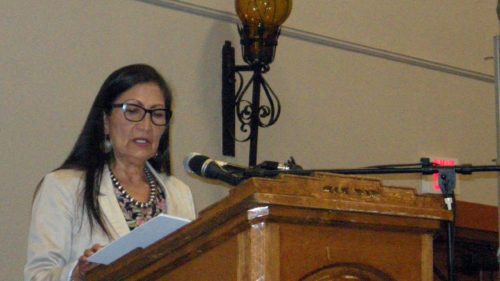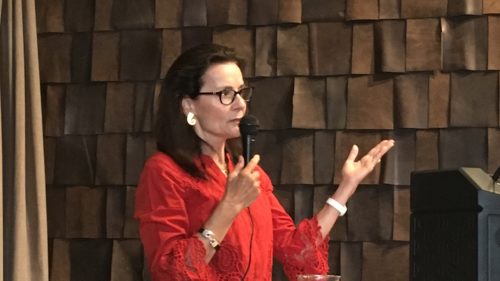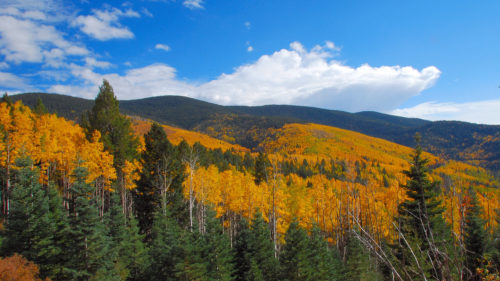To see everything discussed at the most recent meeting, please visit the NMDGF website. Below are the agenda items discussed of the most relevance to our hunters and anglers:
AGENDA ITEM NO. 7: State Wildlife Action Plan (SWAP).
Presented by James Comins – The Department presented to the Commission a final revision of the State’s Wildlife Action Plan (SWAP) for approval. The Department has been in the process of updated the State Wildlife Action Plan which has been compiled to include input from multiple agencies, universities, as well as individuals.
After a staggering 13 months of deliberation, the NMDGF commission has finally approved its State Wildlife Action Plan. Keep in mind that the initial SWAP process was an exhaustive, science-driven stakeholder-inclusive process. The reason it took so long was that the oil and gas industry and the cattle growers didn’t like the way they were portrayed – as possibly having considerable negative impacts on specific habitats – in the document. These complaints brought wide sweeping changes to the document – especially its tone and demeanor which is a troubling trend.
SWAP’s directive is based upon statutory obligation of the Department to steward and restore at risk native species, not to placate industry or the Cattle Grower’s Association.
After a considerable public comment period about SWAP wrapped up, Chairman Kienzle introduced and the commission unanimously passed substantial amendments to the SWAP document to send a strong message to both the Federal Government, the US Fish & Wildlife Service and anyone who might think SWAP’s content could be used to actually reinforce the Department’s statutory obligation of stewarding our at risk native wildlife.
The 6 amendments to the SWAP document by Chairman Kienzle look trivial but may actually have far reaching effects and cause more costs for researchers as well some serious limitations on any conservation actions that come out of a research project.
- Pg. 38 – change wording on Table 8 to indicate that “threats” are potential not definite
- Pg. 38 – Table 8 – change wording on footnote to indicate that ALL research and conservation actions must be “site specific”
- Pg. 64 – again change wording so something “doesn’t happen” unless it is “site specific” – this term was not defined in any way
- Pg. 65 – again – site specific wording
- Pg. 81 – remove the word “tank” from heading since tanks are not natural water sources. However, making sure tanks – man-made water container – are free from bacteria, viruses and pesticides and other contaminants are crucial for good wildlife management as so many species depend on tanks for their sole source of water
- Page 1 – or Preface: A disclaimer by SGR that this document has NO force of rule or regulation and is only an assessment for the purpose of application for funds for “endangered and non-game species”.
Chairman Kienzle’s action, without any public comment or involvement, flies in the face of open government and agency transparency and should be cause for considerable alarm among the public for whom the Department serves.
In a later agenda item on the catch and release proposal on the Chama, Kienzle stated: “I’m all about public notice and doing this (transparency and public input) the right way…” – Apparently Kienzle only feels this is fitting when transparency suits his own personal agenda.
When Director Sandoval suggested that “threatened” needed to be added to the language, Kienzle said no – this is wording directly from “statute’, presumably meaning the Wildlife Conservation Act.
The New Mexico Wildlife Federation is glad the SWAP has been approved, but these amendments look like a lack of transparency for the public and all stakeholders, and a possible serious set of consequences for the Department and those applying for State Wildlife Grant Program through USFWS.
AGENDA ITEM NO. 9: Discussion regarding Carcass Tagging Draft Rule
Still a discussion item, the Department wrangled deciding between a Department-issued paper tag and/or electronic tagging/reporting. Several officers and even commissioners argued that an exclusively electronic system could have limitations in the field due to connectivity. Additionally, NMDGF is moving closer to the completion of its smartphone app that should be rolling out April 1, 2017.
NMWF strongly supports a system that compliments the Department’s conservation officer’s efforts.
What do you think about proposed changes to the carcass tag rule? Email us at nmwildlife@nmwildlife.org.
AGENDA ITEM NO. 10: Final Rule Presentation Changes to the Fisheries
After a great deal of discussion and considerable public comment, the commission approved the proposal to designate 3 miles of special catch and release trout water on Chama below El Vado dam.
1.3 miles of river directly below the dam at Cooper’s Landing will remain a put and take fishery as it has been historically. The remaining 3 miles of public water below this stretch will now become a catch & release fishery.
This decision came despite a contentious Chama meeting on October 27th where 17 anglers vocally opposed the proposal. Rio Arriba county then followed up from this meeting by passing a resolution opposing the designation.
Additional special trout water below Abiquiu is off the table for now.
What do you think of the proposal?
Other items discussed: Gila Trout Rules – two fish limit (any tackle) in Mineral and Whitewater Creeks. Expand free Gila Trout Permit to all recovery and recreational waters, Big cat waters – Alumini Pond at NM State – two fish limit in these waters to distribute quality fish, Add Winter Tour waters in warmer parts of the states, Open Pine River (Navajo) to snagging
AGENDA ITEM NO. 11: Final Rule Presentation on additional Bighorn Sheep season in the San Andreas Mountains 19.31.17 NMAC.
Presented by Stewart Liley – The Department presented to the Commission the potential for an additional bighorn sheep season on the San Andres Mountain Range in the south-central part of New Mexico.
AGENDA ITEM NO. 12: Presentation of Draft Recovery Plan for White-tailed Ptarmigan.
Presented by Stewart Liley – The Department presented to the Commission for review and comments a draft recovery plan for the White-tailed Ptarmigan.
Exciting potential for de-listing this native alpine game bird. Exciting prospect! Recovery and restoration plan underway. The department is accepting public comment on this proposal until December 20th.
AGENDA ITEM NO. 13: Special Hunt Draw Deadlines 2017-2018 License Year.
Presented by Paul Varela – The Department will make a recommendation to the Commission regarding the application deadline dates for the special hunt lottery draws for the 2017-2018 license year.
Feb. 8 – Bear Wildlife Management Area and Turkey Draw
March 22 – Public land Big game
Aug. 23 – Public draws special upland game and waterfowl permits
AGENDA ITEM NO. 15: Update on Development of Shooting Ranges in New Mexico
Presented by Lance Cherry – The Department will provide an update on proposed shooting range developments.
Plans for Cibola County range. A considerable amount of the department’s budget is going to shooting range developments and it is important for sportsmen and women to know where your money is going. These shooting ranges help to promote safe shooting, give a boost to local economies, and reigns in bad behavior related to unregulated shooting on public lands.
The groundbreaking ceremony will take place on December 12th at Tres Piedras WMA
AGENDA ITEM NO. 18: Selection of Title for Premium Hunts Opportunities
Presented by Stewart Liley – The Department will present information to the Commission regarding current discussions to identify/name premium hunt opportunities.
Special deer and elk hunts – like to see it for all big game species
NMWF applauds the desire to make premium hunts available and affordable for the average citizen and we look forward to learning more about the execution of this program. We also applaud the commissioners for wanting to make premium hunts applicable for all big game species.
Named After OC Grey and Austin Roberts – two biologists killed in the 60’s while feeding antelope from a plane.



